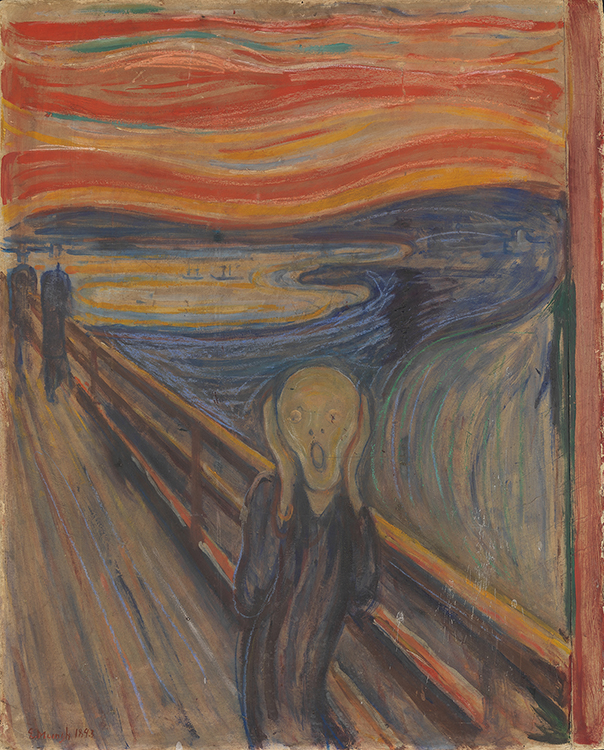
Name: The Scream
Artist: Edvard Munch
Date Painted: 1893
Period: Proto-Expressionism
Dimensions: 91 cm (h) x 73.5 cm (w)
Medium / Material: Oil, Tempera, Pastel and Crayon on Cardboard
Current Location: National Museum and Munch Museum, Oslo
Introduction to The Scream
Edvard Munch’s “The Scream” is one of the most iconic images in the history of art, symbolizing the existential angst and despair of the modern human condition. Created in 1893, this masterpiece is not just a depiction of a physical scream, but rather a manifestation of the internal psychological and emotional turmoil that Munch felt and observed in society around him. In this essay, we will explore the historical context, themes, and artistic techniques that Munch employed in “The Scream,” and how this work continues to resonate with audiences today.
Historical Context
Edvard Munch was a Norwegian painter and printmaker whose work is often associated with the Symbolist movement in art, though he is also considered a precursor to Expressionism. The late 19th century, when Munch created his most famous works, was a period of significant change and uncertainty in Europe. The Industrial Revolution had transformed the landscape of society, bringing about profound social, economic, and psychological shifts. It was against this backdrop of modern angst that Munch created “The Scream.”
Themes
“The Scream” is rich in themes that explore the depths of human emotion and the existential crises of the individual. The central figure in the painting, clasping their face in despair against a blood-red sky, is an embodiment of intense emotional suffering. Munch himself described the inspiration for the painting as a moment of overwhelming existential dread. This figure has been interpreted as experiencing a moment of profound anxiety or existential crisis, reflecting Munch’s interest in the psychological states of human beings.
The themes of “The Scream” extend to the alienation and loneliness of modern life. The figure stands alone on a bridge, separated from the serene landscape in the background and the two figures in the distance. This isolation is a direct commentary on the individual’s place in the modern world—a world where traditional structures and certainties were crumbling, leaving individuals feeling disconnected and adrift.
Artistic Techniques
Munch’s technique in “The Scream” was revolutionary for its time and contributed significantly to the painting’s emotional impact. The use of color is particularly striking, with the vibrant oranges and reds of the sky creating a stark contrast with the blue-black fjord and the pale figure. This juxtaposition enhances the sense of unease and turmoil. Munch’s brushwork is loose and expressive, which complements the painting’s emotional intensity. The swirling lines of the sky and the curved horizon line seem to echo the turmoil within the figure, creating a sense of movement and chaos.
The perspective employed in “The Scream” also contributes to its unsettling effect. The viewer is placed directly in front of the figure, almost as if we are the recipients of the scream. This direct engagement pulls the viewer into the scene, making the emotional experience of the figure palpable.
Conclusion
Edvard Munch’s “The Scream” is a powerful exploration of the human psyche, delving into themes of existential angst, loneliness, and the disorientation of modern life. Through innovative artistic techniques and a profound emotional depth, Munch created a work that transcends its time, speaking to universal human experiences. “The Scream” remains not only a landmark in the history of art but also a poignant reminder of the complexity of the human condition. Its enduring relevance and impact testify to its status as a timeless masterpiece, continuing to captivate and resonate with audiences around the world.